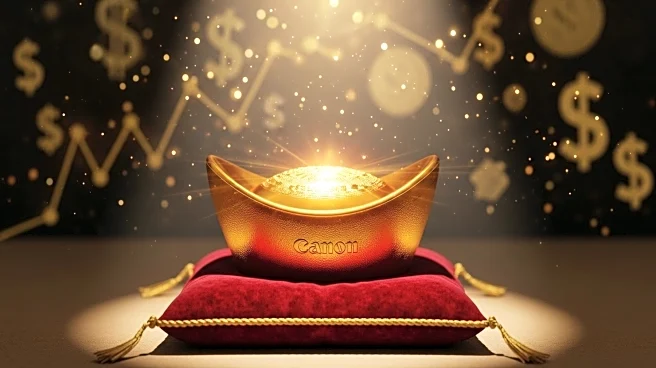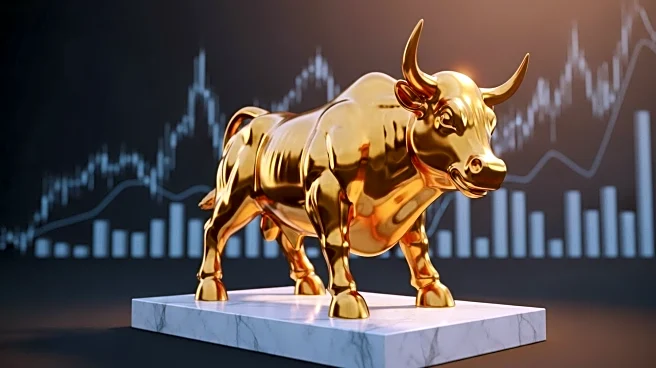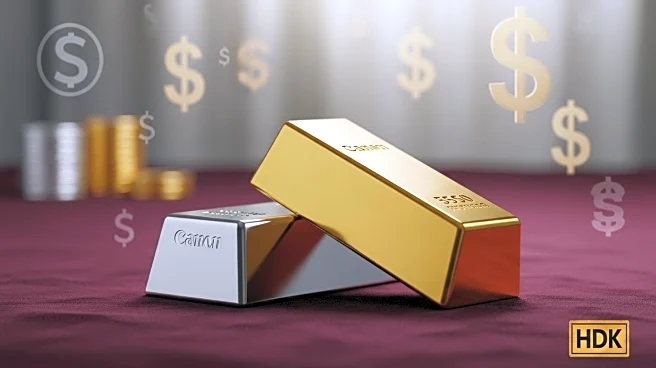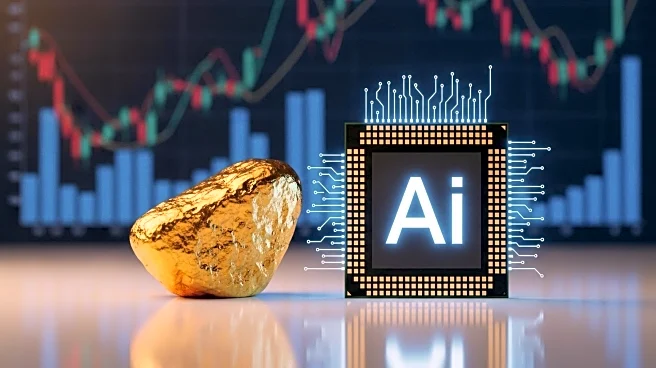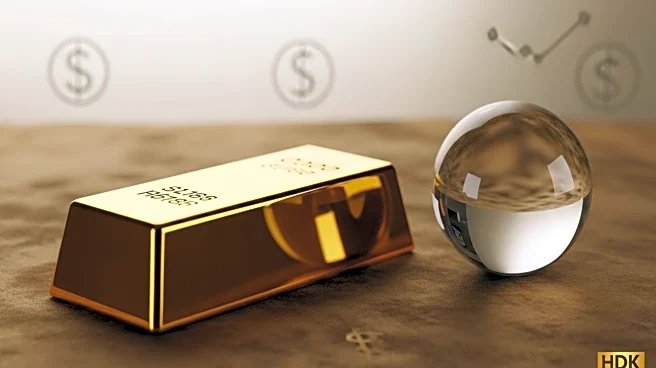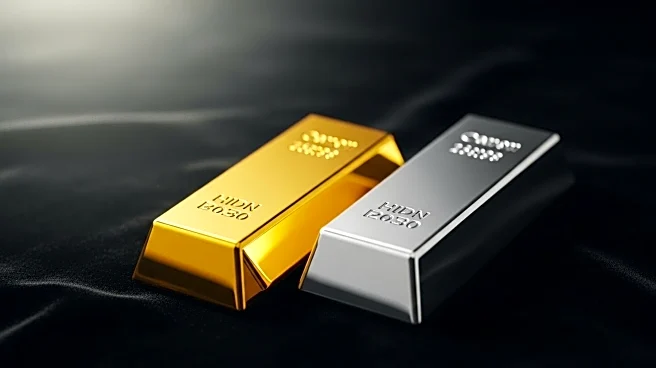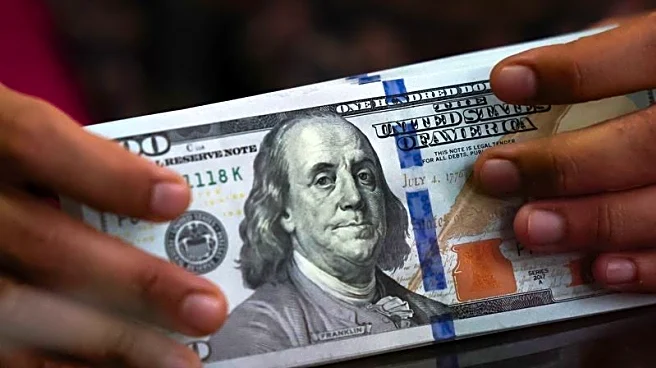What's Happening?
Gold prices have surged to approximately $3,884 per ounce, nearing historic highs, driven by a safe-haven rally amid economic and geopolitical uncertainties. The metal has gained about 47% year-to-date, marking its seventh consecutive weekly gain. Silver and platinum have also seen significant increases, with silver reaching a 14-year peak and platinum hitting a 12-year high. The U.S. government shutdown and geopolitical tensions, including conflicts in Ukraine and the Middle East, have fueled investor demand for precious metals as a hedge against risk.
Why It's Important?
The rise in gold and other precious metals reflects growing investor anxiety over economic stability and geopolitical tensions. As traditional safe-haven assets, these metals provide a hedge against inflation and currency devaluation, attracting both institutional and retail investors. The surge in prices could impact industries reliant on these metals, such as electronics and automotive, due to increased costs. Additionally, central banks' continued stockpiling of gold indicates a strategic shift away from reliance on the U.S. dollar, potentially affecting global financial markets.
What's Next?
Analysts predict that gold prices could surpass $4,000 per ounce if current trends persist, driven by expectations of Federal Reserve rate cuts and continued geopolitical instability. Investors will closely monitor economic indicators and central bank policies for further cues. The mining industry may see increased exploration and production efforts to capitalize on high prices, though regulatory and environmental challenges could pose obstacles. The broader economic implications of sustained high precious metal prices will be a key focus for policymakers and market participants.

